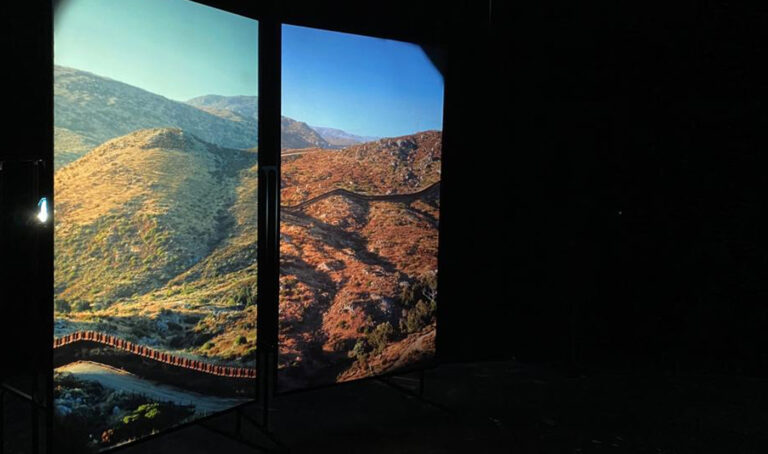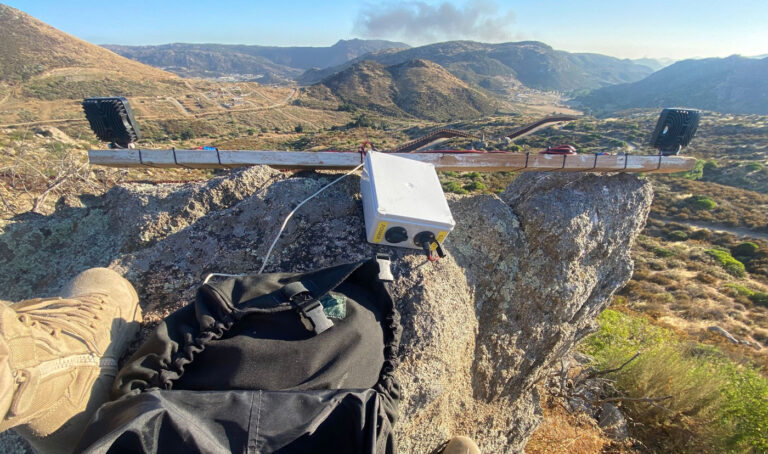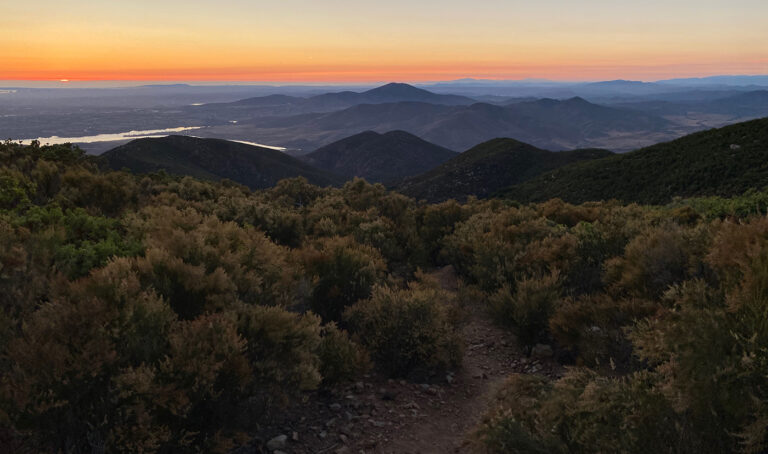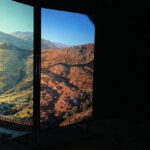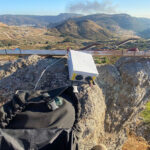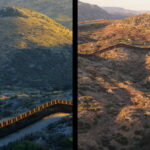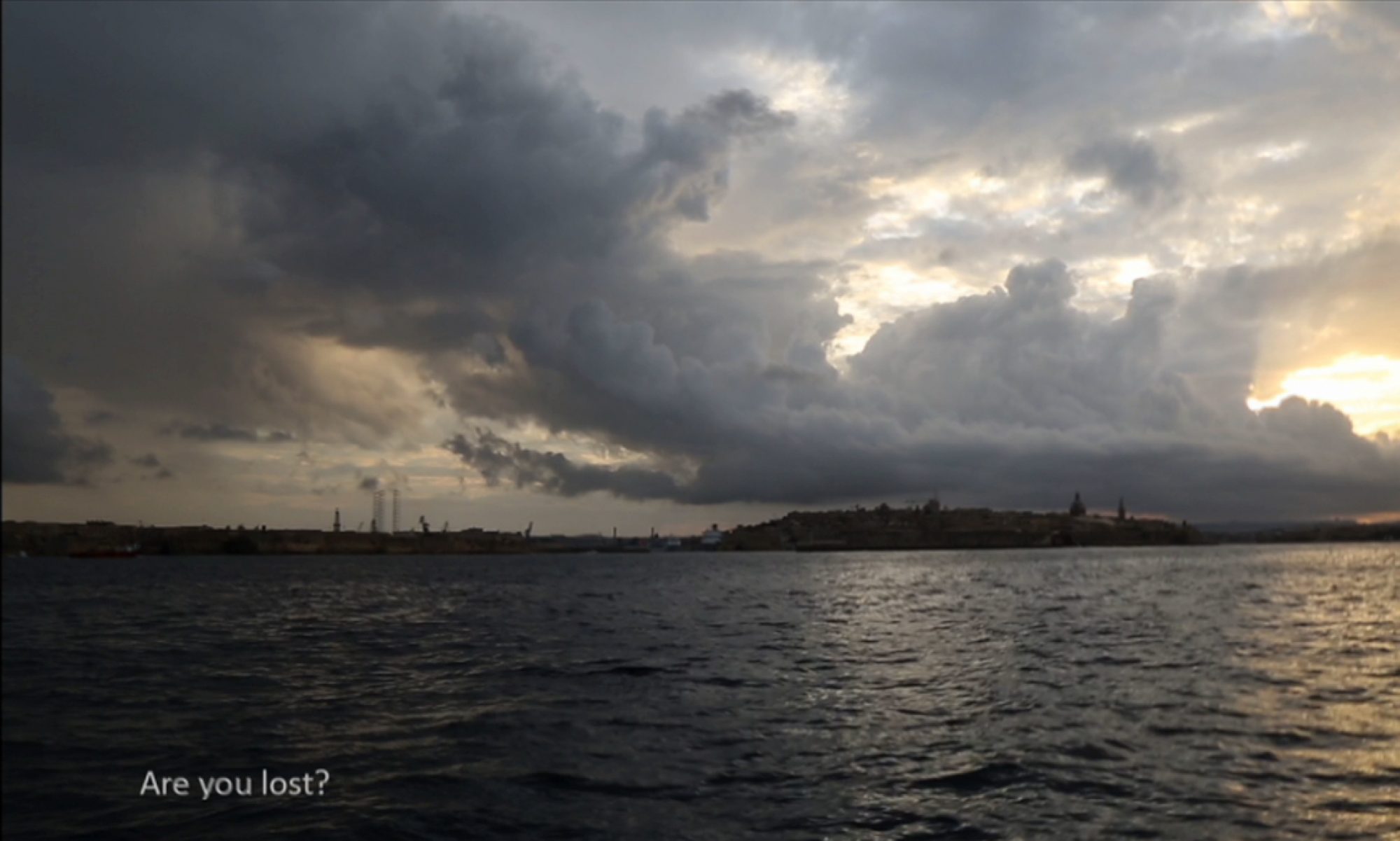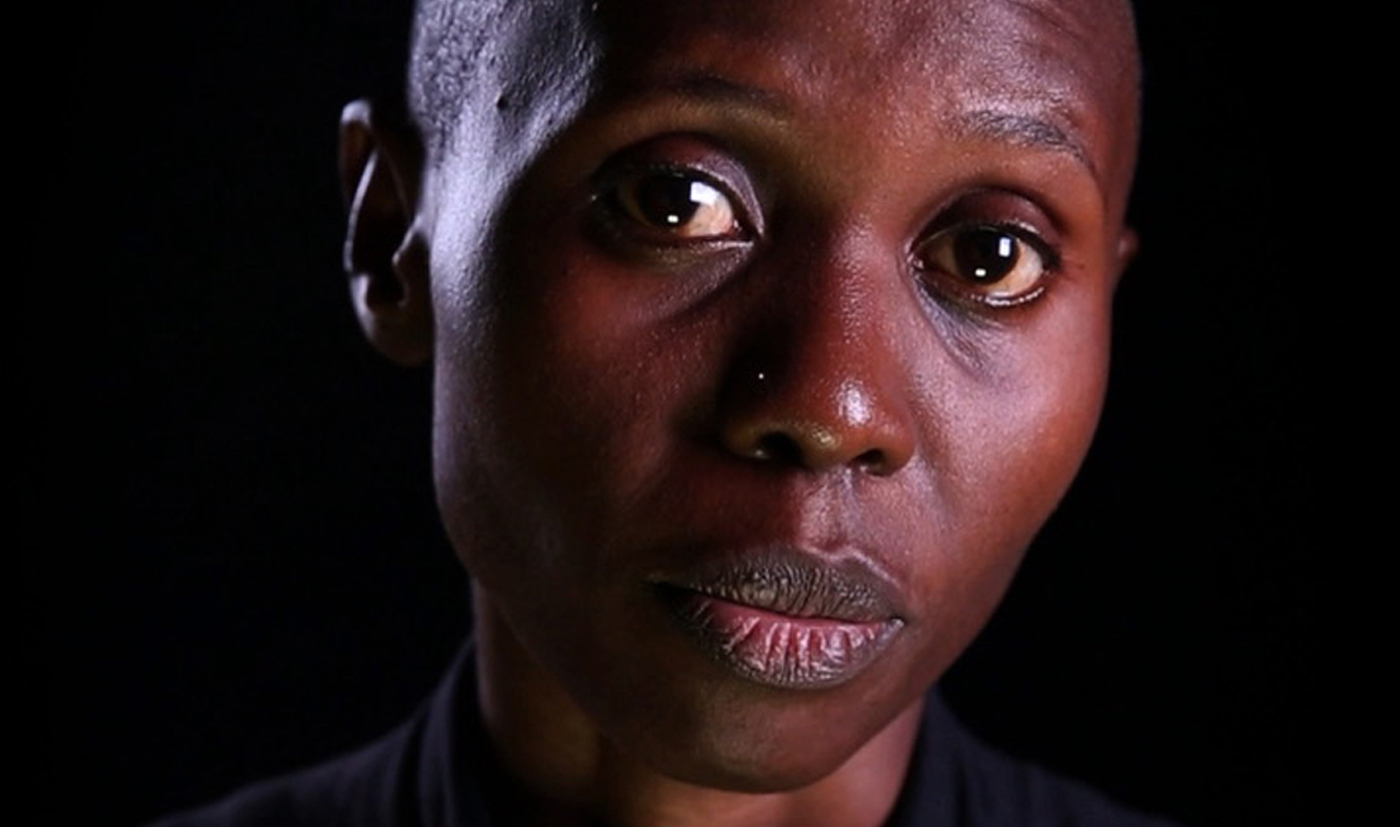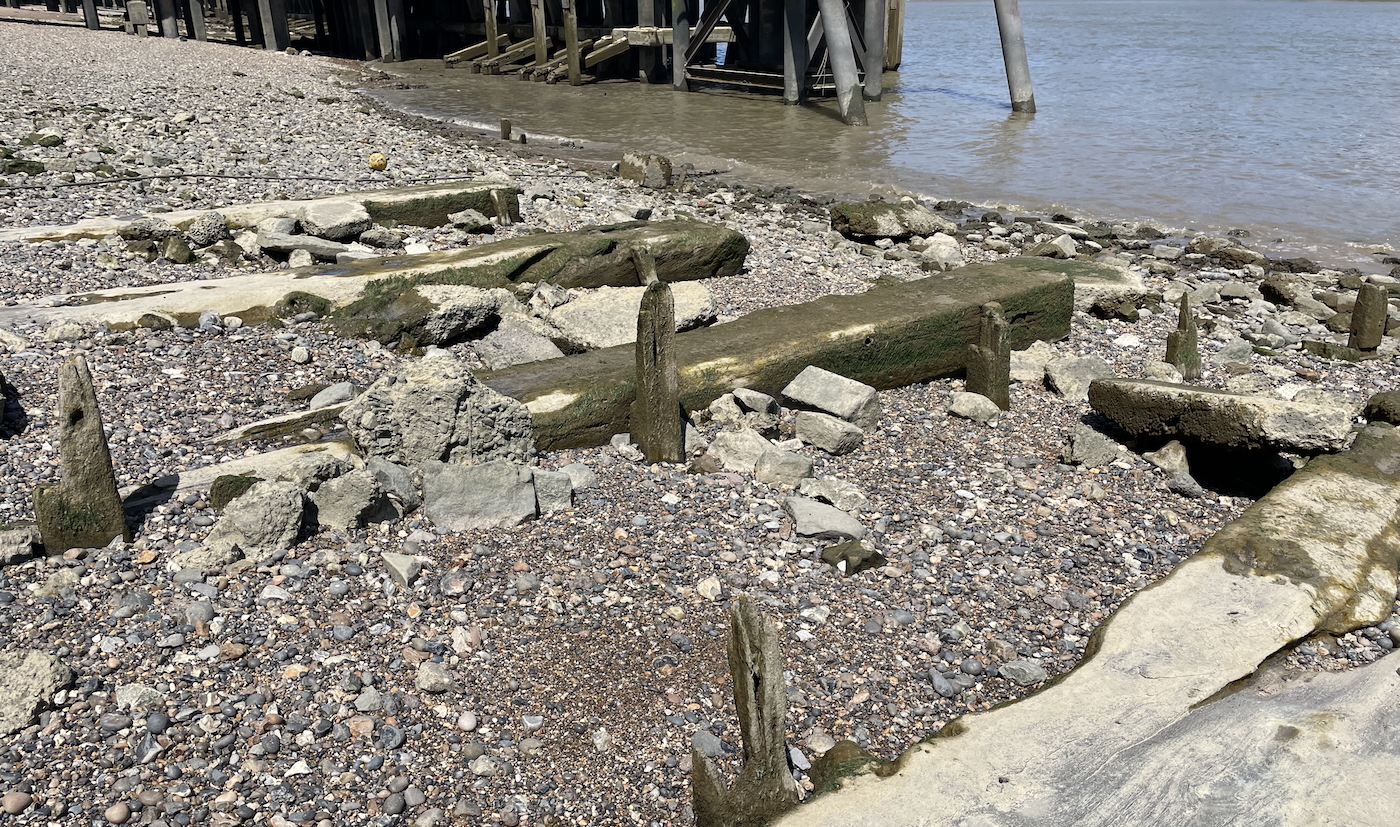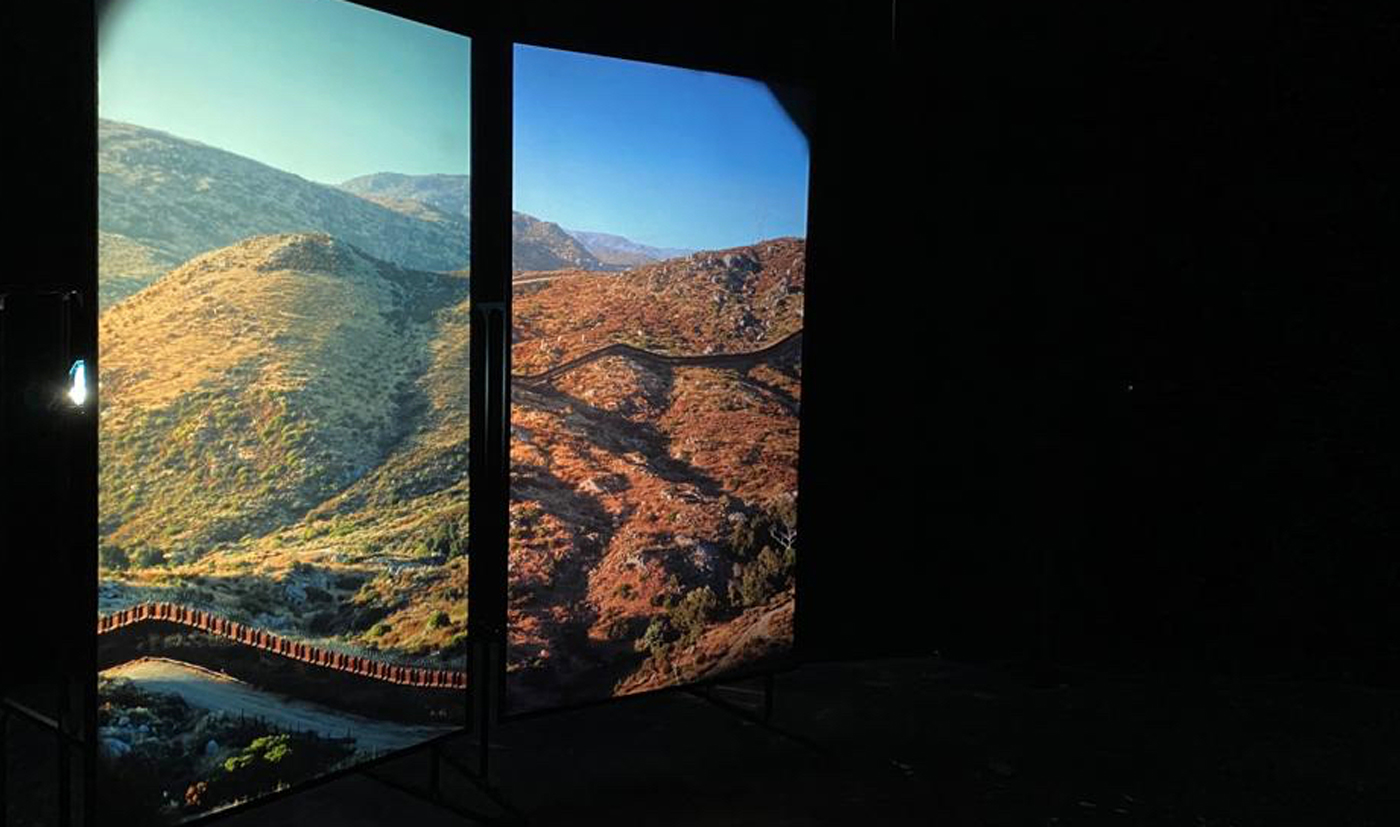Mirror VI : Border is part of the ‘Mirror’ project, a series of two-screen works devised to provide insight into global communities that experience distancing and objectification. ‘Mirror’ experiments with perspective in order to challenge common human assumptions and provide insight into nuanced personal and collective narratives. Mirror VI : Border was envisaged as an immersive projection. It is made visible to the audience through co-located views of each side of a remote conversation. The intermittent light signals visible within the centre of each view are translated into text as each character is revealed.
Over a period of two years of field research, Cotterrell identified locations, which allowed line-of-sight connections between both sides of the border. Through liaison with the Mexican Military, Federal Bureau of Land Management, and US Border Patrol reluctant permissions were gained to broadcast messages and film the results within the contentious border landscape. The research focuses on the issue of migrant labour, its ongoing economic imperative, and its enduring status as a target for social and political prejudice. The project is situated at the busiest border within the USA. The Tijuana-Tecate area has been the focus for much of the politics of xenophobia directed at the perceived threat of mass migration into the USA, but also houses a vast array of US manufacturing plants that rely on the free movement of money, goods, and workforce across this border.
The project references to the historical narrative of 1942 when the US Congress established the ‘Bracero’ program permitting millions of Mexican workers temporary visas to visit and work as farm labourers in the USA. The opportunity was welcomed by many but they found that they were often subject to harsh conditions, prejudice, and suspicion. Despite valuing the labour resource, the US government was anxious that its ongoing recruitment drives would decrease due to awareness of the harsh conditions and was also fearful of the temporary visas being used to encourage longer-term settlement of the migrants. As a result, the US postal service was instructed not to deliver many of the Bracero men’s letters back to their families in Mexico. In 2020 Stanford University published twenty-four of these undelivered hand-written letters and raised awareness of this historic censorship.
The artist, David Cotterrell, sought to symbolically broadcast these letters across the fortified Southern US border. The original texts were transcribed and two modified systems were designed to enable the automated broadcast of morse-code messages using the headlights of cars and trucks.
Credits
- Artists: David Cotterrell & Thomas Vann Altheimer
- Sponsor: Deptford X, Global Challenges Research Fund, Sheffield Hallam University
